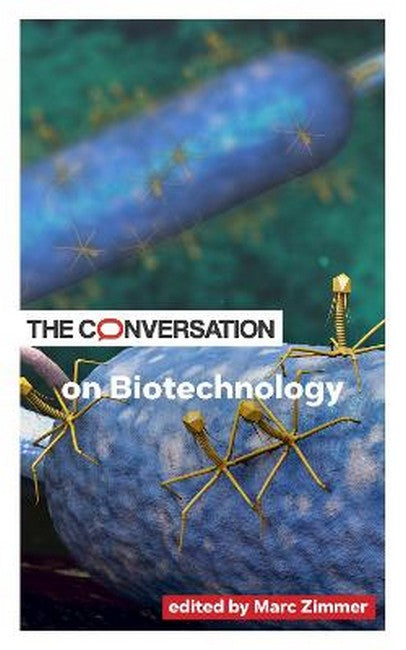Marc Zimmer (WATERFORD, CT) is the Jean C. Tempel '65 Professor of Chemistry at Connecticut College and the author of The State of Science: What the Future Holds and the Scientists Making It Happen, Glowing Genes: A Revolution in Biotechnology, Illuminating Diseases: An Introduction to Green Fluorescent Proteins, and four books for young adults. His writing has appeared in Newsweek, USA Today, and the Los Angeles Times.
Request Academic Copy
Please copy the ISBN for submitting review copy form
Description
Series Editor's Foreword Preface Part I. Building Blocks of Life 1. What Is mRNA? The Messenger Molecule That's Been in Every Living Cell for Billions of Years Is of Great Interest to Vaccine Developers 2. What Is CRISPR, the Gene Editing Technology That Won the Chemistry Nobel Prize? 3. What Is a Protein? A Biologist Explains 4. Three Ways RNA Is Being Used in the Next Generation of Medical Treatment 5. Why Sequencing the Human Genome Failed to Produce Big Breakthroughs in Disease 6. Editing Genes Shouldn't Be Too Scary-Unless They Are the Ones That Get Passed to Future Generations 7. How Many Genes Does It Take to Make a Person? 8. Everything You Wanted to Know about the First Cloned Mammal-Dolly the Sheep 9. From CRISPR to Glowing Proteins to Optogenetics-Scientists' Most Powerful Technologies Have Been Borrowed from Nature Part II. Biotechnology, Food, and the Environment 10. What Is Bioengineered Food? An Agriculture Expert Explains 11. Organic Farming with Gene Editing: An Oxymoron or a Tool for Sustainable Agriculture? 12. How We Got to Now: Why the US and Europe Went Different Ways on GMOs 13. Can Genetic Engineering Save Disappearing Forests? 14. How Scientists Make Plant-Based Foods Taste and Look More Like Meat 15. Genetically Modified Mosquitoes May Be the Best Weapon for Curbing Disease Transmission 16. How Engineered Bacteria Could Clean Up Oil Sands Pollution and Mining Waste Part III. Powerful Tools for Medicine and Health 17. New Gene Therapies May Soon Treat Dozens of Rare Diseases, but Million-Dollar Price Tags Will Put Them out of Reach for Many 18. Engineered Viruses Can Fight the Rise of Antibiotic-Resistant Bacteria 19. Genetic Engineering Transformed Stem Cells into Working Mini-livers That Extended the Life of Mice with Liver Disease 20. We're Creating "Humanized Pigs" in Our Ultraclean Lab to Study Human Illnesses and Treatments 21. When Researchers Don't Have the Proteins They Need, They Can Get AI to "Hallucinate" New Structures 22. Living Drugs: Engineering Bacteria to Treat Genetic Diseases 23. How Gene-Editing a Person's Brain Cells Could Be Used to Curb the Opioid Epidemic 24. CRISPR Can Help Combat the Troubling Immune Response against Gene Therapy 25. 3D-Printed Organs Could Save Lives by Addressing the Transplant Shortage 26. From Marmots to Mole-Rats to Marmosets-Studying Many Genes in Many Animals Is Key to Understanding How Humans Can Live Longer Part IV. Genetic Frontiers and Ethics 27. Scared of CRISPR? 45 Years on, IVF Shows How Fears of New Medical Technology Can Fade 28. How Can a Baby Have 3 Parents? 29. Ethicists Need More Flexible Tools for Evaluating Gene-Edited Food 30. Lab-Grown Embryos and Human-Monkey Hybrids: Medical Marvels or Ethical Missteps? 31. Those Designer Babies Everyone Is Freaking Out about Are Not Likely to Happen 32. Bioweapons Research Is Banned by an International Treaty-but Nobody Is Checking for Violations 33. From Coronavirus Tests to Open-Source Insulin and Beyond, "Biohackers" Are Showing the Power of DIY Science Contributors Index

